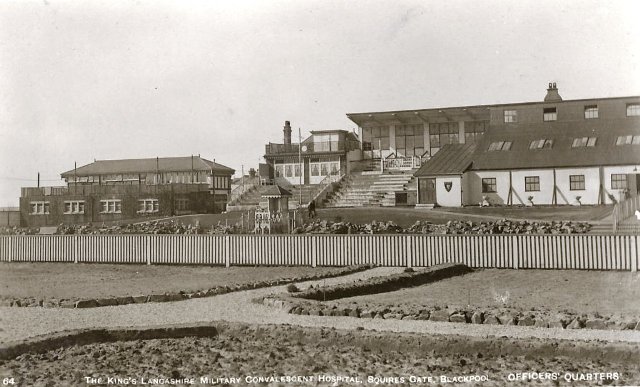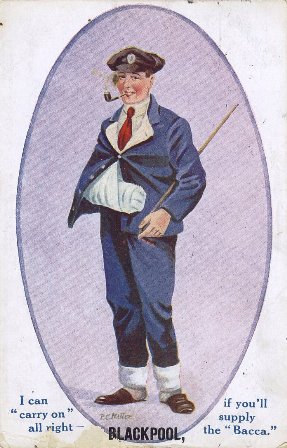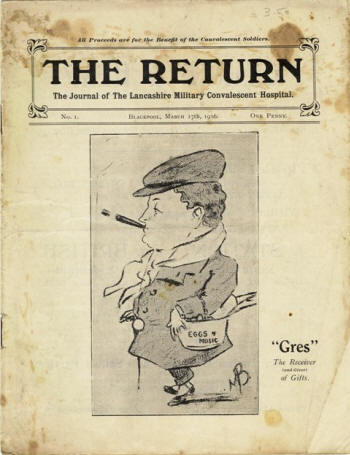|
The army commandeered the Clifton Park Racecourse at Squires Gate (site of
present Blackpool Airport) which closed on the 26th April 1915.

Clifton Park Racecourse during conversion into the Military Hospital,
1915.
This view was taken looking from the grandstand towards the sea with the sand dunes in
the distance.
Over the following six months the racecourse buildings were converted into
the Clifton Park Military Convalescent Hospital which opened 1 October 1915 for
injured soldiers from the Lancashire and Yorkshire Regiments. After seeking permission from King
George V it was renamed The King's Lancashire Military Convalescent Hospital.
According to newspaper reports some 2,000 hospital beds were placed in the old
racecourse grandstand and a number of newly constructed huts. Wounded soldiers were treated,
rehabilitated and returned to active service. The hospital was under the supervision of Doctor
Winder of South Shore, Blackpool.
In 1919 it became the King's Lancashire Convalescent Centre (K.L.C.C) where
soldiers were rehabilitated and retrained with skills needed for their return
to civilian life. It is estimated that about 38,000 men were treated on this
site during and after the 1914-18 War.
|
|
The Burnley Express and Advertiser, September 1915
FOR LANCASHIRE'S WOUNDED SOLDIERS
CONVALESCENT MILITARY HOSPITAL AT BLACKPOOL
In about another fortnight Lancashire will have its own convalescent military hospital at
Clifton Park Racecourse, South Shore, Blackpool. The work of conversion is rapidly proceeding, and
many interesting details were given by Lieutenant-Colonel Netterville Barron M.V.O., the officer
commanding, to representatives, this week shown round the course. It will be the fourth great
military camp hospital.
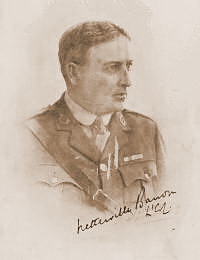
At Eastbourne, there is one of 3,000 beds, at Dartford one of 1,000 beds, the Epsom hospital
will eventually have 5,000 beds, and the Clifton Park Hospital -- Colonel Barron thinks, it ought
to have a better name -- County Palatine Military Hospital, for instance, -- will provide 2,000
beds for a start. Possibly there will eventually be far more beds, for it is to provide for all
Lancashire's wounded and war worn soldiers who can be made fit and strong again for the firing
line. This is the object of the hospital.
No patients who are really ill will be dealt with, only cases that are likely to be well enough to
go back to the front in six or eight weeks will be taken. Colonel Barron explained that physical
culture will play a large part in the scheme. There are to be trained masseurs at the hospital.
Lord Derby is now issuing an appeal for money to equip and pay the running costs of the massage and
electrical equipment of the hospital.
|
 King's Lancashire Military Convalescent Hospital after the
grandstand was converted into the main hospital building.
King's Lancashire Military Convalescent Hospital after the
grandstand was converted into the main hospital building.
King's Lancashire Military
Convalescent Hospital - Officers Quarters with the grandstand building to the
right.
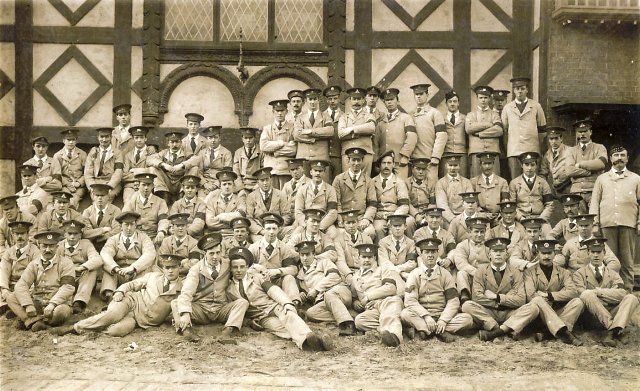
Wounded Soldiers in hospital blues from the King's Lancashire
Military Convalescent Hospital probably at the Convent on Lytham Road.
The
Hospital Blues uniform worn by those who weren't bedridden.
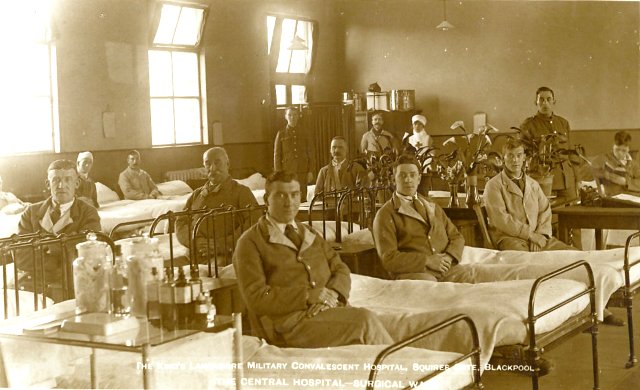
King's Lancashire Military Convalescent Hospital - Central
Hospital Surgical Ward.
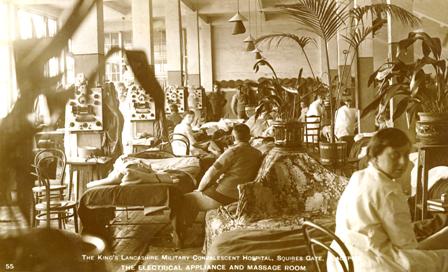
King's Lancashire Military
Convalescent Hospital - Electrical Appliance & Massage
Room.
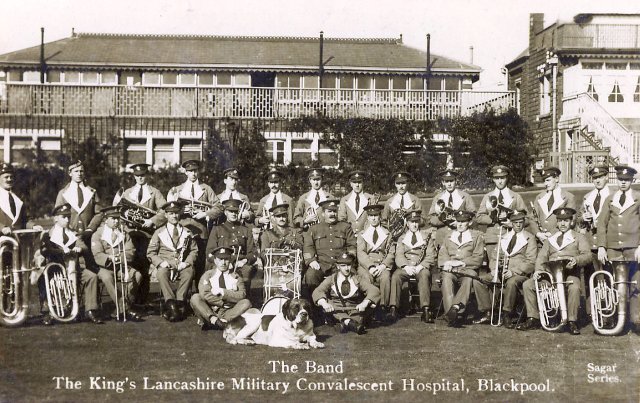 King's Lancashire Military Convalescent Hospital - The
Band.
King's Lancashire Military Convalescent Hospital - The
Band.
"The Return", the journal of the King's Lancashire Military Convalescent Hospital.
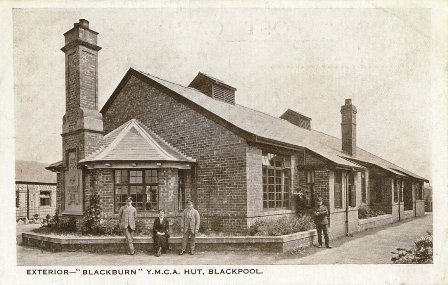
The YMCA hut which opened at the Squires Gate military hospital
during the first week of November 1915. It was built by W. Eaves & Co and measured
110 feet by 30 feet. Thanks to Ted Lightbown for identifying the building and
providing this information.
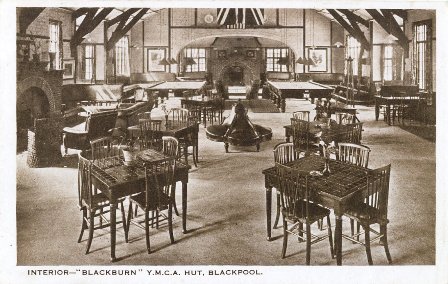
|




